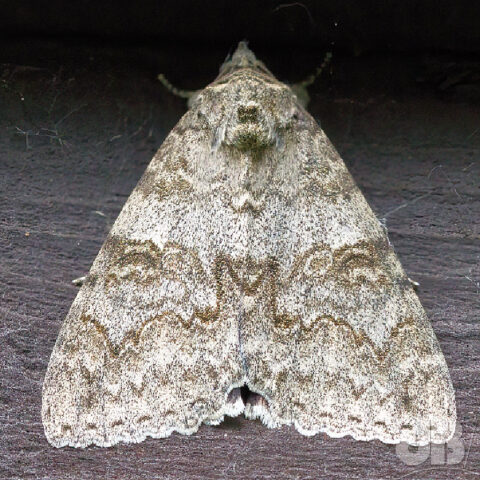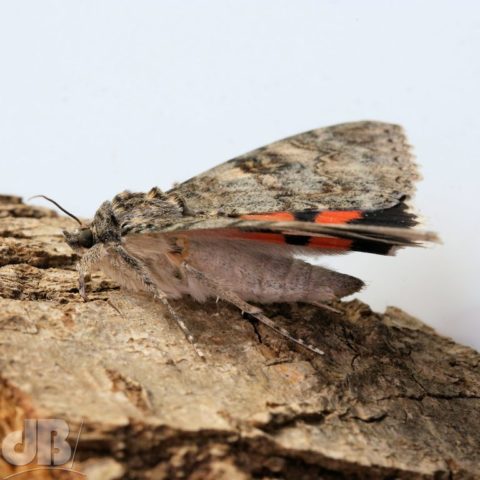UPDATE: 1 Jul 2022 – Spotted one at Woodwalton Fen NNR on the back of the Rothschild Bungalow while looking for Purple Emperor.

Once you get into mothing you will see lots and lots of moths with names that refer to the colour of their hindwings. They refer to it as an “underwing” because the forewings which are usually less colourful but might be wonderfully patterned nevertheless, cover the hind wings where that flash of colour is seen. It’s presumably an adaptation to give predators with colour vision, such as birds, a bit of a shock when the moth flicks its wings open, it might be that it resembles the flash of a cat’s eyes.

This moth is quite huge and is beautifully camouflaged until it reveals those shocking red markings on its hindwings. Its scientific name is Catocala nupta. The genus name Catocala means “beautiful hindwings” and the nupta species alludes to the fact that the kinky naturalists who named it thought the moth had flashy red bloomers that it revealed only on its wedding night!
As regulars will know, the first one that got me into the scientific mothing lark was the Copper Underwing, but there are Large Yellow, Lesser Yellow, Least Yellow, Broad-bordered, Lesser Broad-bordered, Lunar, Straw, there are at least a dozen more, the list goes on. However, only the Catocala species are known as Underwings generally. Today, first time for me a very large Red Underwing (about 40mm from nose to the end of its forewing). The wingspan is between 65 and 75 mm.

The species is quite a common moth over much of England and Wales. A night-flyer in August and September, it will come to light and sugaring. Its larvae feed on Poplar and Willow. 1st July 2022 update – Earliest I have seen one was at Woodwalton Fen NNR.


